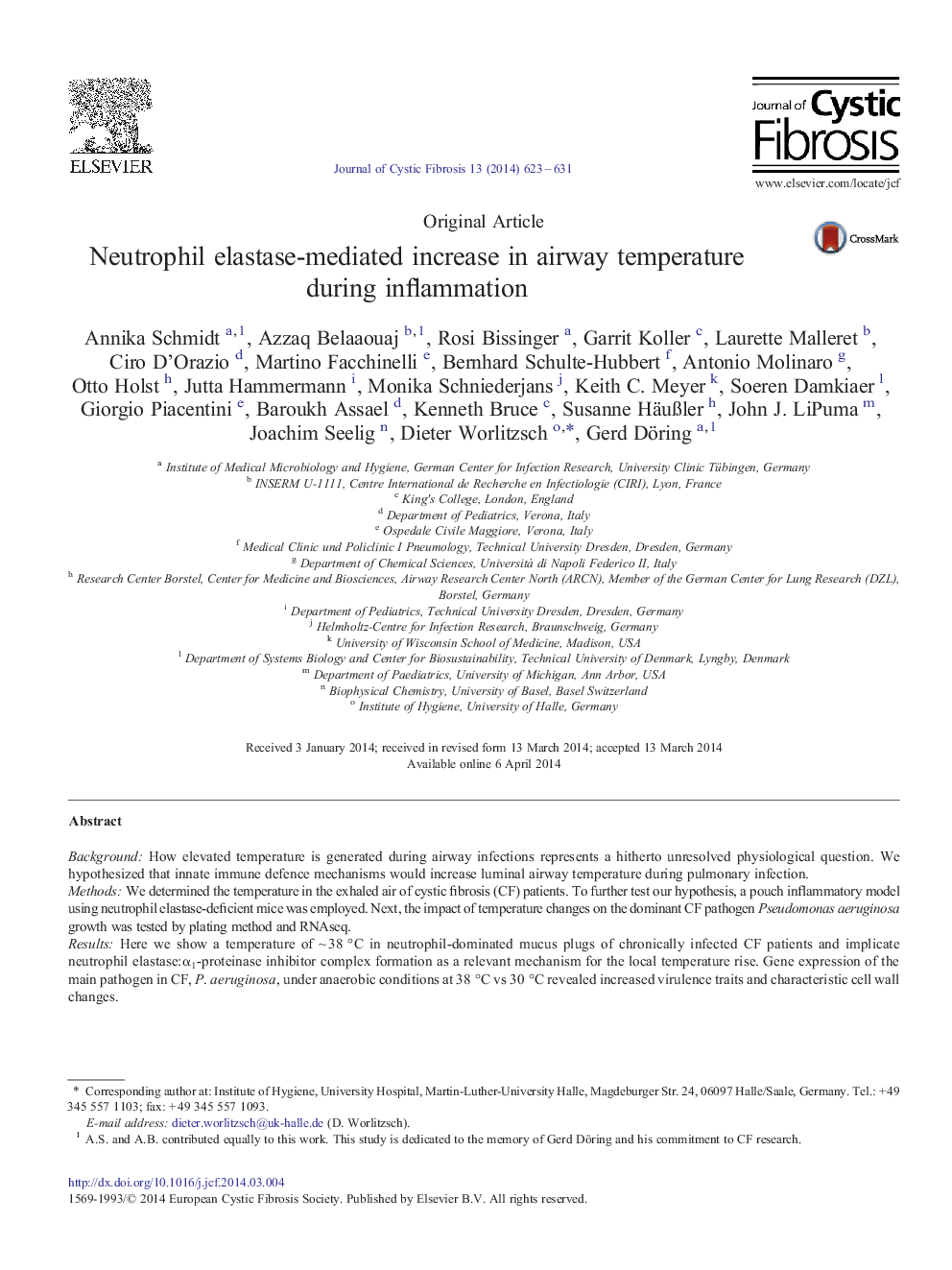| Article ID | Journal | Published Year | Pages | File Type |
|---|---|---|---|---|
| 4208332 | Journal of Cystic Fibrosis | 2014 | 9 Pages |
BackgroundHow elevated temperature is generated during airway infections represents a hitherto unresolved physiological question. We hypothesized that innate immune defence mechanisms would increase luminal airway temperature during pulmonary infection.MethodsWe determined the temperature in the exhaled air of cystic fibrosis (CF) patients. To further test our hypothesis, a pouch inflammatory model using neutrophil elastase-deficient mice was employed. Next, the impact of temperature changes on the dominant CF pathogen Pseudomonas aeruginosa growth was tested by plating method and RNAseq.ResultsHere we show a temperature of ~ 38 °C in neutrophil-dominated mucus plugs of chronically infected CF patients and implicate neutrophil elastase:α1-proteinase inhibitor complex formation as a relevant mechanism for the local temperature rise. Gene expression of the main pathogen in CF, P. aeruginosa, under anaerobic conditions at 38 °C vs 30 °C revealed increased virulence traits and characteristic cell wall changes.ConclusionNeutrophil elastase mediates increase in airway temperature, which may contribute to P. aeruginosa selection during the course of chronic infection in CF.
